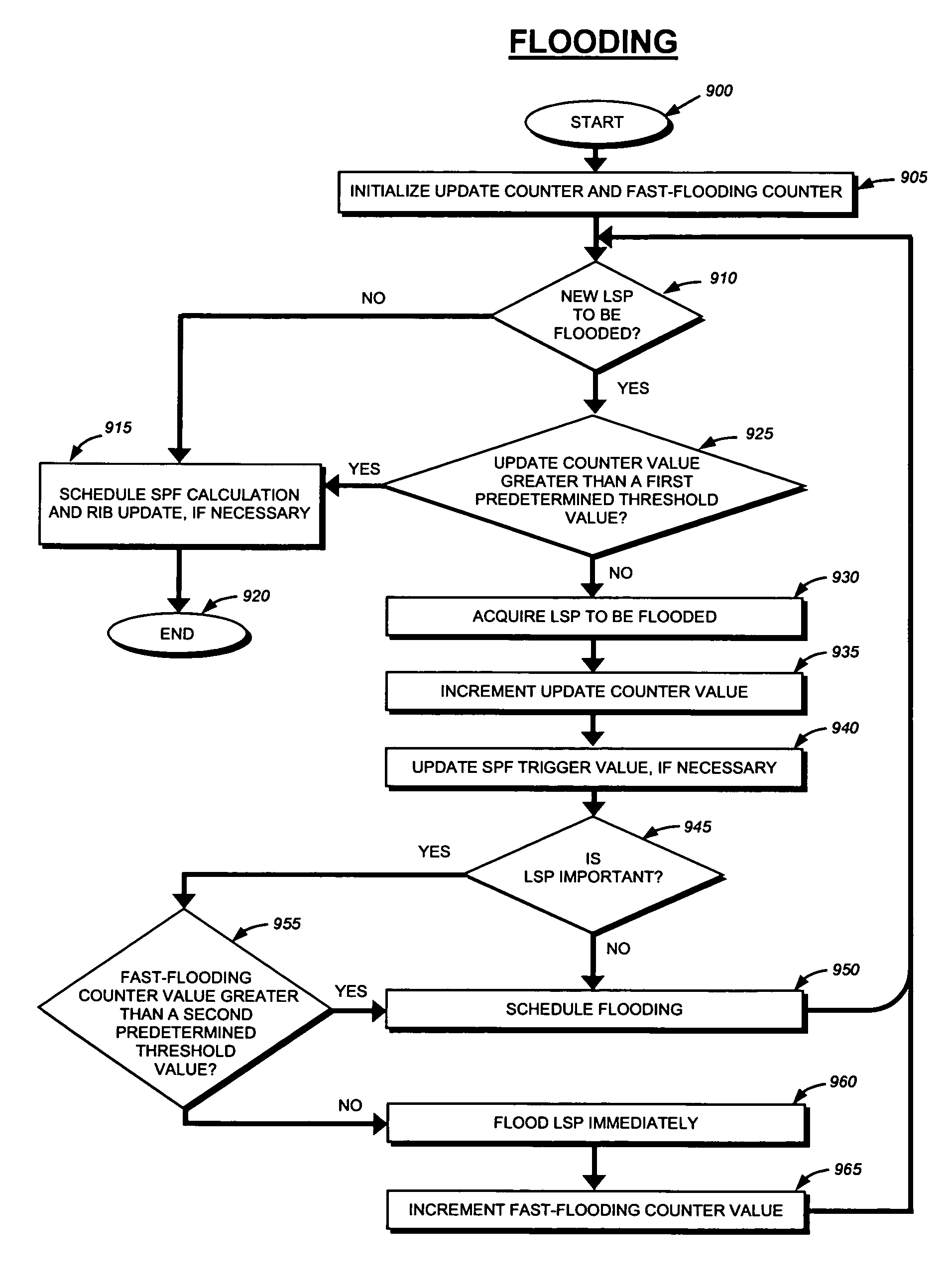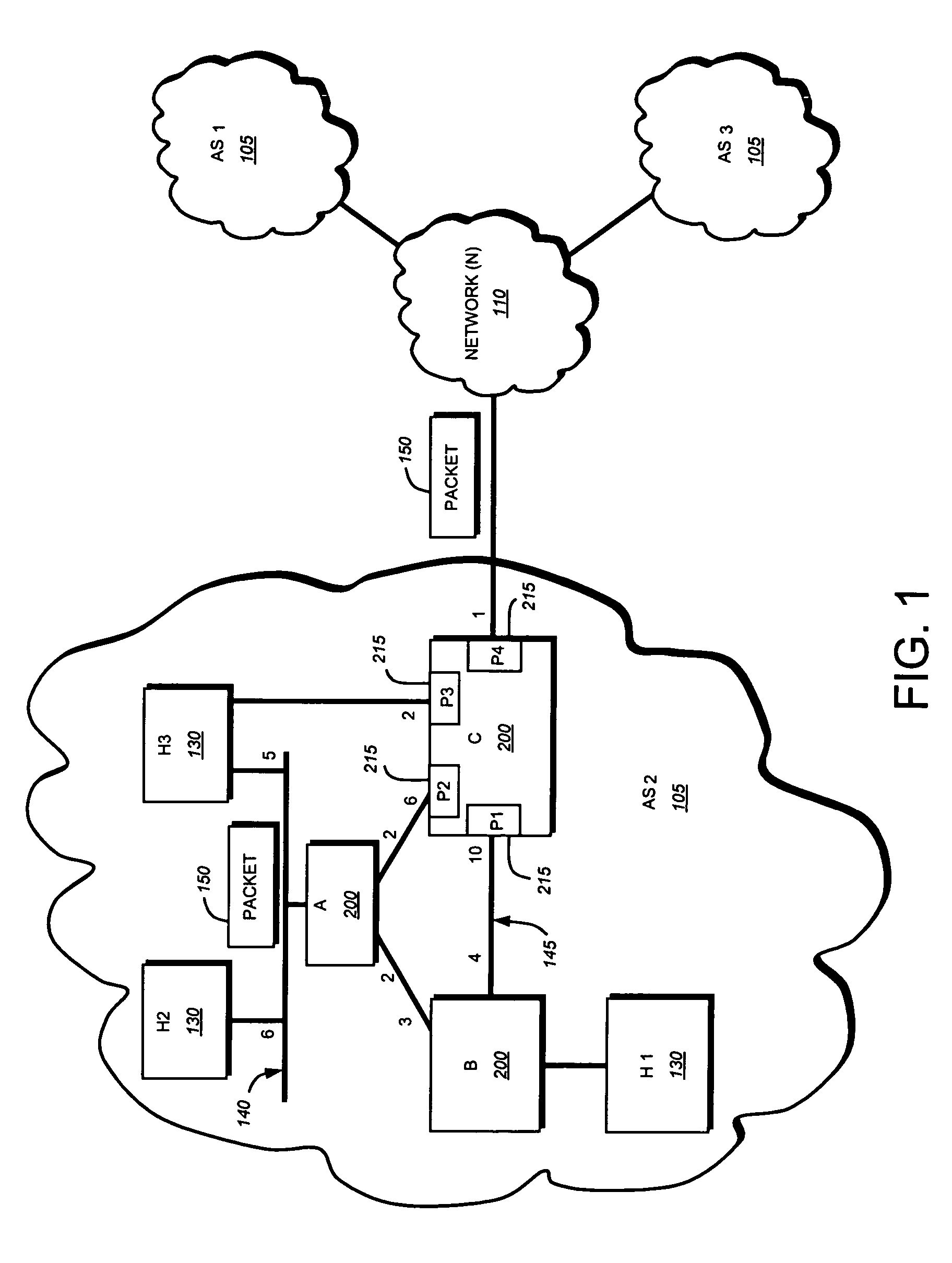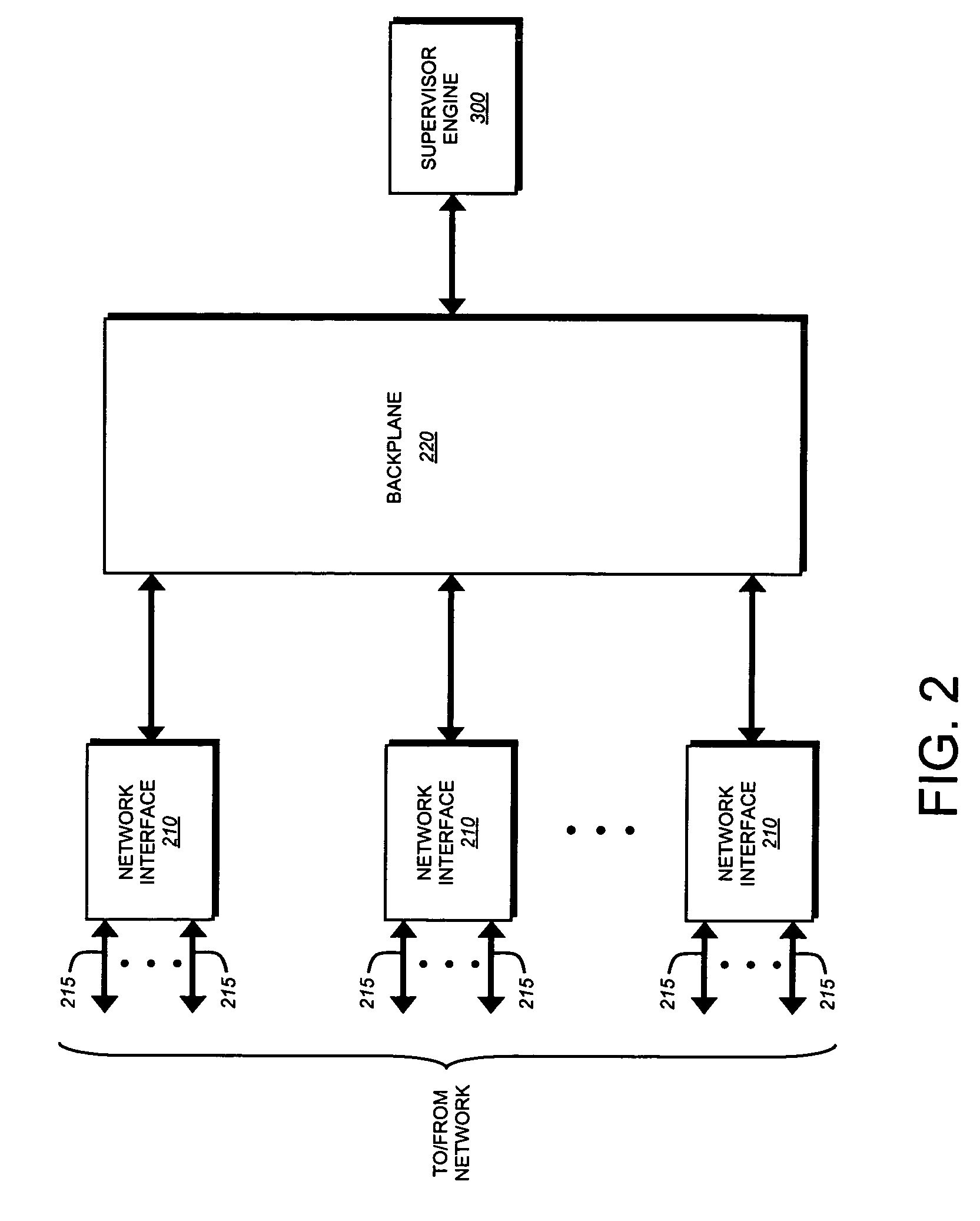Mechanism to improve concurrency in execution of routing computation and routing information dissemination
a routing computation and concurrency technology, applied in the field of network communications, can solve the problem of limiting the time delay of rib update, and achieve the effect of optimizing the concurrency of flooding operations, reducing the number of computationally intensive routing-table computations, and efficient processing link-state packets
- Summary
- Abstract
- Description
- Claims
- Application Information
AI Technical Summary
Benefits of technology
Problems solved by technology
Method used
Image
Examples
Embodiment Construction
A. Intermediate Network Nodes
[0032]FIG. 1 is a schematic block diagram of an exemplary computer network 100 comprising a plurality of routing domains or autonomous systems 105 (AS1-AS3) interconnected by a network 110. Each autonomous system (AS) includes one or more network nodes, including client nodes 130 and intermediate network nodes 200. Typically, at least one intermediate node 200 is designated as a “gateway” node through which client communications can pass into and out of the AS 105. The gateway node may permit data packets 150 to be exchanged with other autonomous systems, i.e., through the network 110, using predefined network communication protocols such as the Transmission Control Protocol / Internet Protocol (TCP / IP), Asynchronous Transfer Mode (ATM) protocol, Frame Relay protocol, Internet Packet Exchange (IPX) protocol, etc.
[0033]Data packets 150 also may be communicated entirely within an autonomous system 105. For instance, the AS may include an intermediate network...
PUM
 Login to View More
Login to View More Abstract
Description
Claims
Application Information
 Login to View More
Login to View More - R&D
- Intellectual Property
- Life Sciences
- Materials
- Tech Scout
- Unparalleled Data Quality
- Higher Quality Content
- 60% Fewer Hallucinations
Browse by: Latest US Patents, China's latest patents, Technical Efficacy Thesaurus, Application Domain, Technology Topic, Popular Technical Reports.
© 2025 PatSnap. All rights reserved.Legal|Privacy policy|Modern Slavery Act Transparency Statement|Sitemap|About US| Contact US: help@patsnap.com



